Degloving injuries are a type of traumatic injury that can cause severe damage to the skin, soft tissue, and underlying structures. One of the most devastating types of degloving injuries is a degloved face injury, which occurs when the skin and soft tissue are completely stripped away from the face. This can result in significant physical and emotional trauma for the individual and their loved ones.
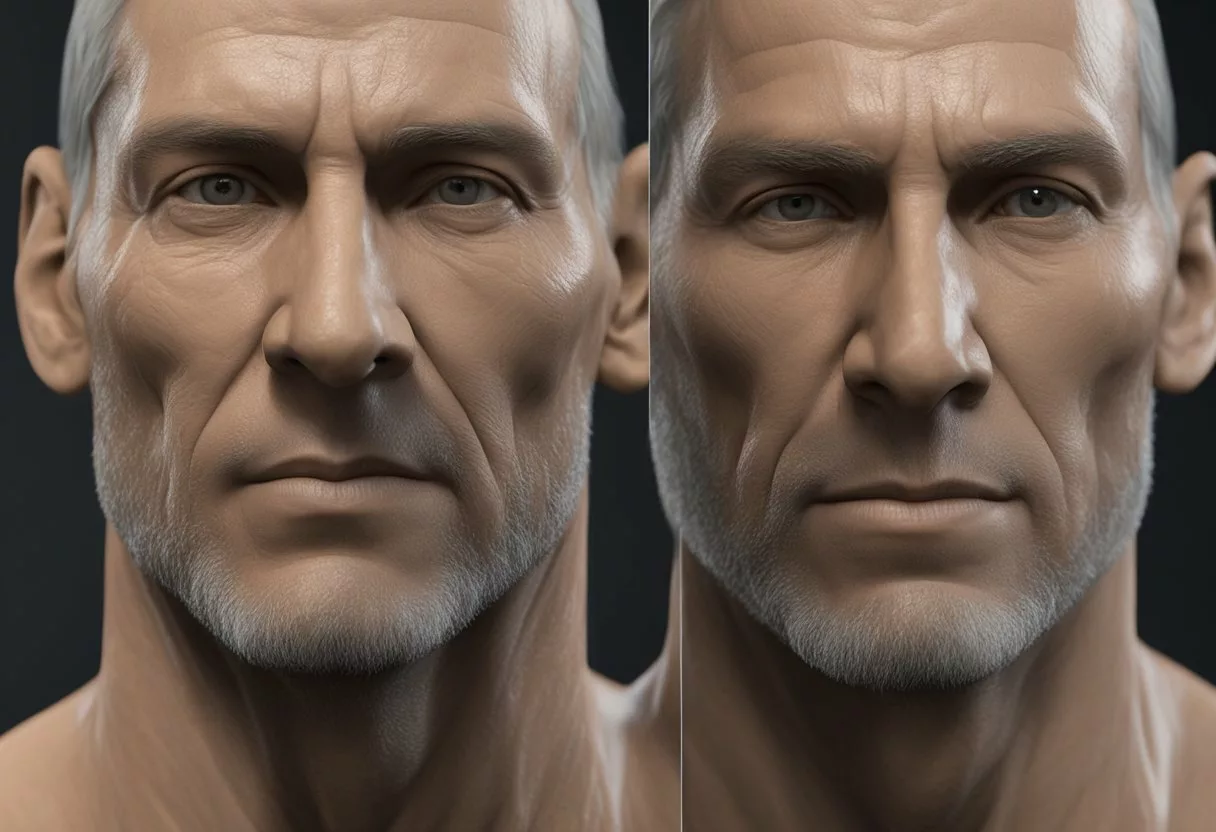
Understanding the causes, clinical presentation, diagnosis, treatment, and management of degloved face injuries is essential for healthcare professionals, patients, and their families. In this article, we will explore the various aspects of degloved face injuries, including their causes, clinical presentation, diagnosis, treatment and management, complications, recovery and rehabilitation, psychological considerations, and prevention and safety.
Key Takeaways
- Degloving injuries are a type of traumatic injury that can cause severe damage to the skin, soft tissue, and underlying structures.
- A degloved face injury is one of the most devastating types of degloving injuries.
- Understanding the causes, clinical presentation, diagnosis, treatment, and management of degloved face injuries is essential for healthcare professionals, patients, and their families.
Understanding Degloving
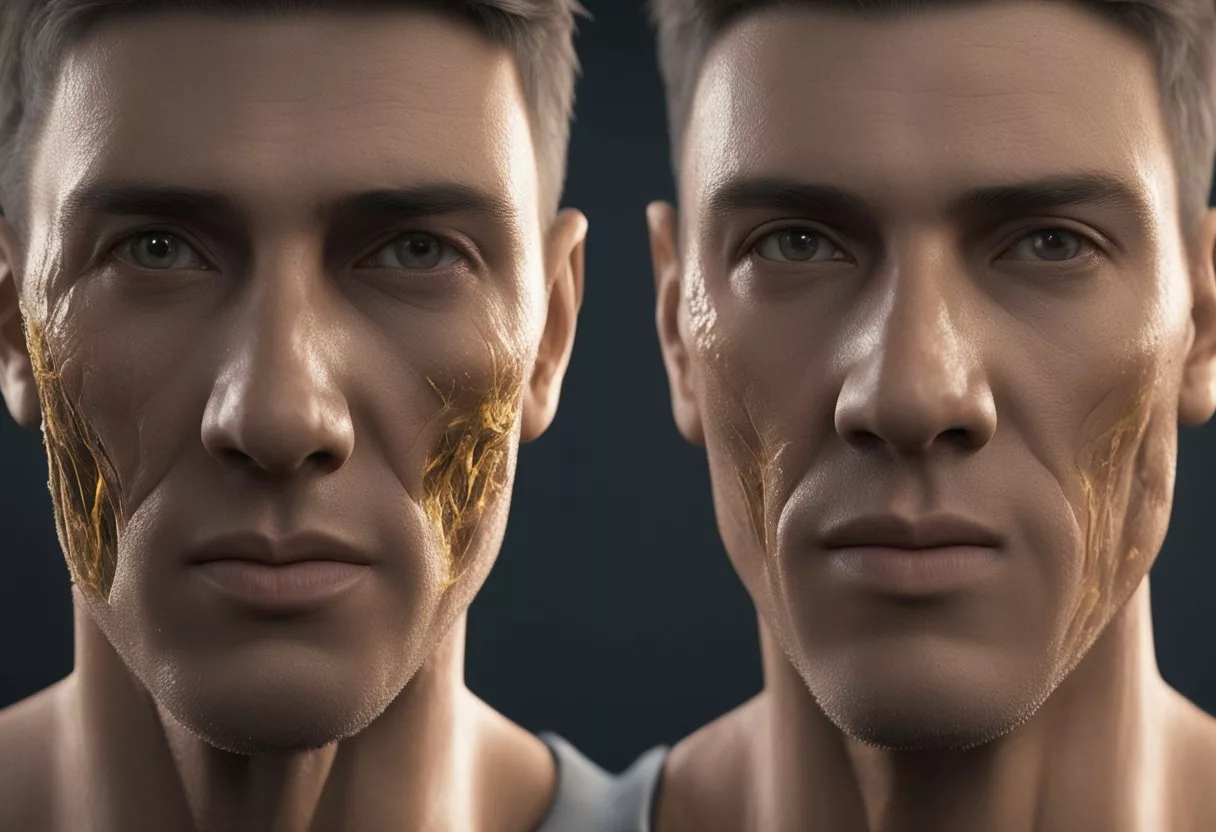
Definition and Types
Degloving is a severe injury that occurs when the skin and underlying soft tissue are stripped away from the underlying structures, such as bones, muscles, nerves, and blood vessels. This injury can be caused by various mechanisms, including high-velocity trauma, machinery accidents, animal bites, and surgical procedures.
There are two types of degloving injuries: open and closed. Open degloving injuries occur when the skin and soft tissue are completely separated from the underlying structures, exposing them to the external environment. Closed degloving injuries, on the other hand, occur when the skin and soft tissue are partially separated from the underlying structures, but remain intact.
Mechanism of Injury
The mechanism of injury for degloving can vary depending on the cause. High-velocity trauma, such as in traffic accidents or falls from a height, can cause open degloving injuries by shearing the skin and soft tissue away from the underlying structures. Machinery accidents, such as those involving industrial equipment or farming machinery, can also cause open degloving injuries. Animal bites, particularly from dogs or large predators, can cause both open and closed degloving injuries due to the force of the bite.
Surgical procedures can also result in degloving injuries, particularly in procedures involving the face, hands, or feet. In these cases, the surgeon must be careful to preserve the blood supply to the skin and soft tissue to prevent degloving injuries.
In conclusion, degloving injuries are severe injuries that can occur due to various mechanisms. Understanding the types and mechanisms of injury can help prevent degloving injuries and improve treatment outcomes.
Causes and Risk Factors
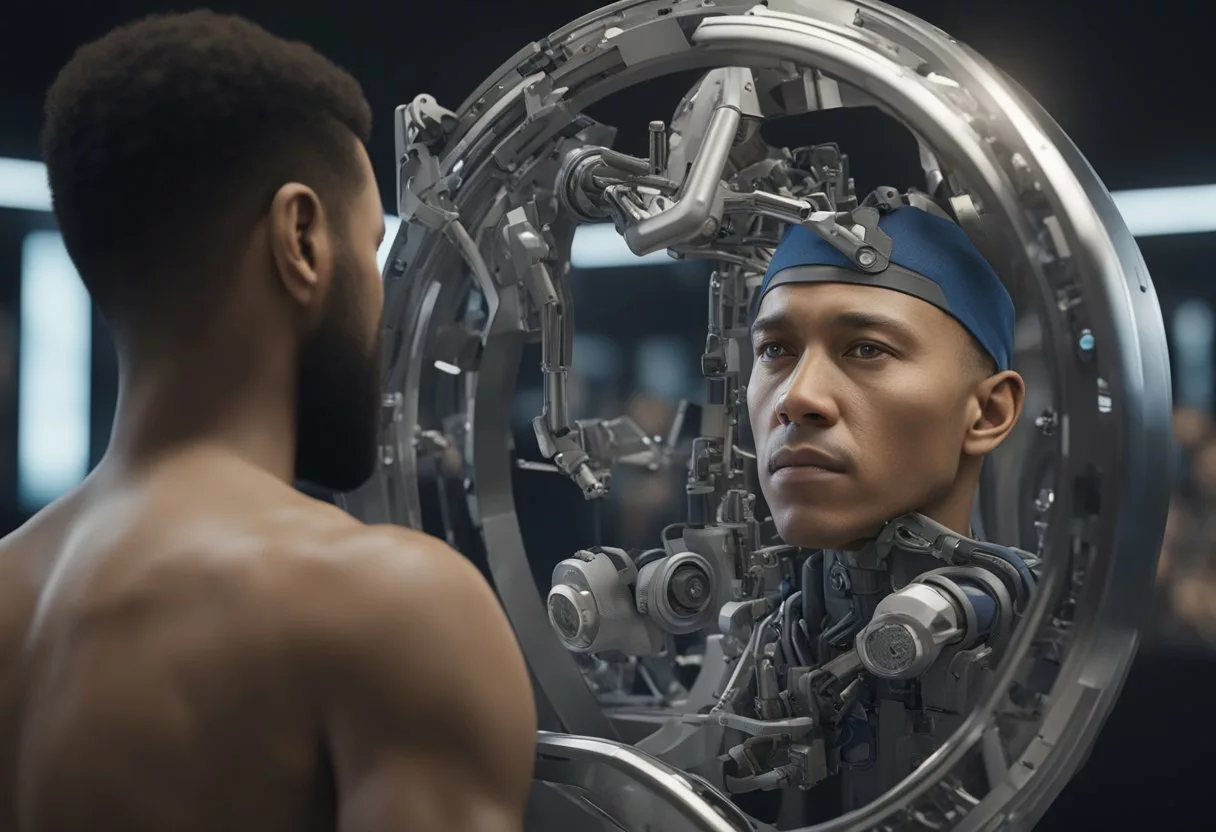
Common Causes
Degloved face injuries can be caused by a variety of high-impact traumas, including falls, sports injuries, traffic accidents, and violent assaults. These injuries occur when the skin and soft tissue of the face are forcefully separated from the underlying structures. The extreme external forces applied to the face cause the skin to peel away, exposing the bones and muscles underneath.
Traffic accidents are one of the most common causes of degloved face injuries. The high speeds involved in car crashes can cause severe damage to the face, leaving victims with disfiguring injuries. Falls from heights can also cause degloved face injuries, particularly when the victim lands face-first on a hard surface.
Sports injuries can also result in degloved face injuries, particularly in contact sports such as football, hockey, and boxing. These injuries can occur when a player is hit in the face with a ball, stick, or other object, or when they collide with another player.
Risk Factors
There are several risk factors that can increase a person’s likelihood of suffering a degloved face injury. These include:
- Participating in contact sports
- Working in high-risk occupations, such as construction or mining
- Driving or riding in a vehicle without wearing a seatbelt
- Riding a motorcycle without a helmet
- Engaging in risky behavior, such as drinking and driving or using drugs
It’s important to take steps to reduce your risk of suffering a degloved face injury. This includes wearing appropriate safety gear when participating in sports or working in high-risk occupations, always wearing a seatbelt when driving or riding in a vehicle, and avoiding risky behavior.
Clinical Presentation

Symptoms
Degloving injuries to the face can present with a variety of symptoms. These symptoms can include swelling, pain, bruising, and visible injuries. The severity of the symptoms can vary depending on the extent of the injury. In some cases, the pain can be severe, while in others, it may be less noticeable. Additionally, patients may experience a loss of sensation or numbness in the affected area.
Physical Examination Findings
During a physical examination, a healthcare provider will look for signs of a degloving injury. This can include visible injuries, such as lacerations or abrasions, as well as swelling and bruising. They will also assess the patient’s range of motion in the affected area, as well as any loss of sensation or numbness. In some cases, imaging studies, such as X-rays or CT scans, may be ordered to further evaluate the extent of the injury.
It is important to note that degloving injuries to the face can be severe and may require immediate medical attention. Patients who experience severe pain, bleeding, or other concerning symptoms should seek medical attention right away.
Diagnosis
Initial Assessment
When a degloved face injury is suspected, immediate medical attention is crucial. The initial assessment should include a thorough physical examination to determine the extent and severity of the injury. Symptoms of a degloving injury may include deep lacerations or open wounds, exposed bone, muscle, tendons, nerves, and/or connective tissue, severe blood loss, total or partial skin separation, tissue death, and shock.
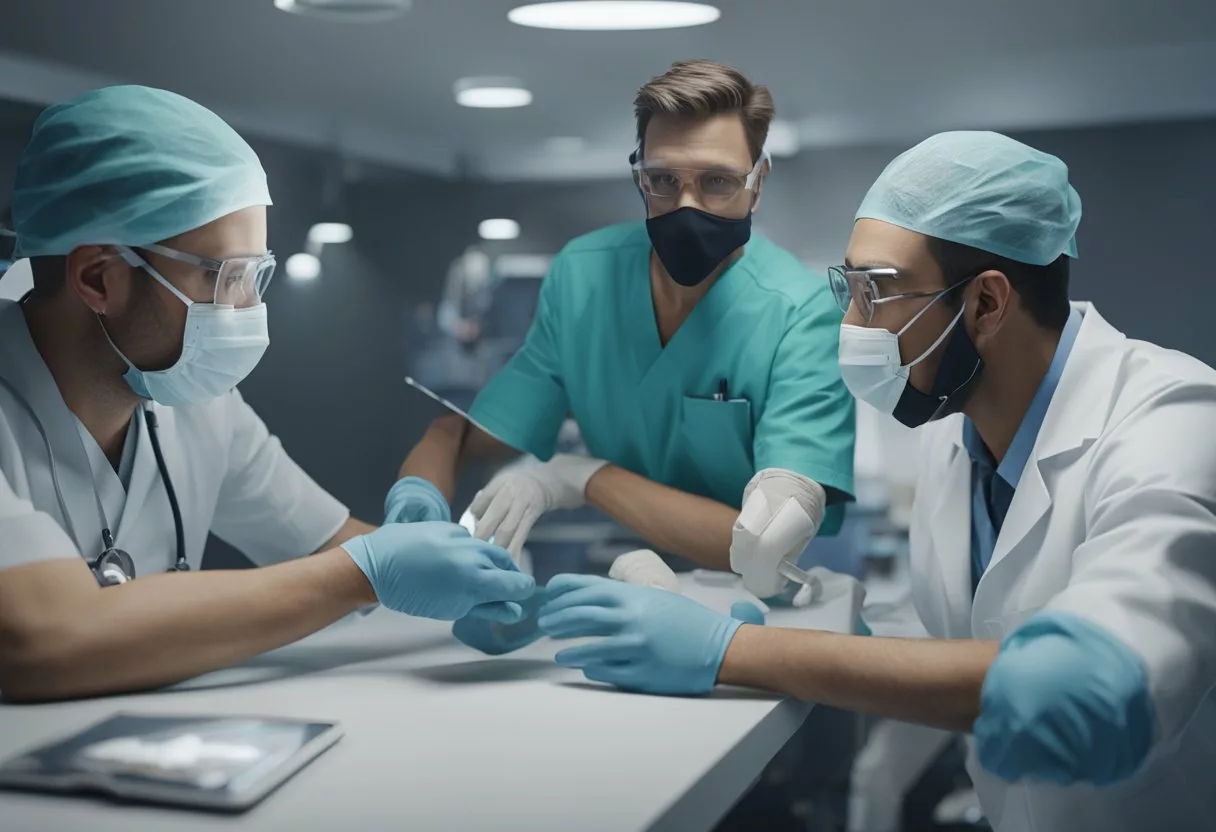
Imaging Techniques
Imaging techniques such as CT scans may be used to help diagnose and assess the extent of the injury. CT scans can provide detailed images of the bones, soft tissues, and internal organs, allowing doctors to determine the extent of the injury and plan the appropriate treatment. Other imaging techniques such as X-rays and MRI scans may also be used depending on the specific circumstances of the injury.
In addition to the initial assessment and imaging techniques, other diagnostic tests such as blood tests and nerve conduction studies may be performed to assess the extent of the injury and monitor the patient’s progress during treatment. Overall, the diagnosis of a degloved face injury requires prompt medical attention and a thorough assessment to determine the extent of the injury and plan the appropriate treatment.
Treatment and Management

Immediate Care
When a degloved face injury occurs, immediate medical attention is crucial. The priority is to control bleeding, stabilize the patient, and prevent infection. The wound should be cleaned thoroughly and covered with a sterile dressing to reduce the risk of infection. Pain management is also a critical aspect of immediate care. Pain medications such as opioids may be prescribed to manage the pain.
Surgical Procedures
In severe cases, surgical intervention may be necessary to repair the damage caused by the injury. Skin grafts are a common surgical procedure used to treat degloved face injuries. This involves taking skin from another part of the body and grafting it onto the affected area. Reconstructive surgery may also be necessary to repair any damage to bones or other structures in the face.
Non-Surgical Interventions
Non-surgical interventions may also be used to manage degloved face injuries. Physical therapy can help to restore function and mobility to the affected area. Pain management techniques such as nerve blocks or epidurals may be used to manage pain without the use of opioids. Antibiotics may also be prescribed to prevent infection, and debridement may be necessary to remove dead tissue and promote healing.
It is important to note that treatment and management of degloved face injuries will vary depending on the severity of the injury and the individual patient’s needs. A comprehensive treatment plan will be developed based on the specific circumstances of the injury.
Complications
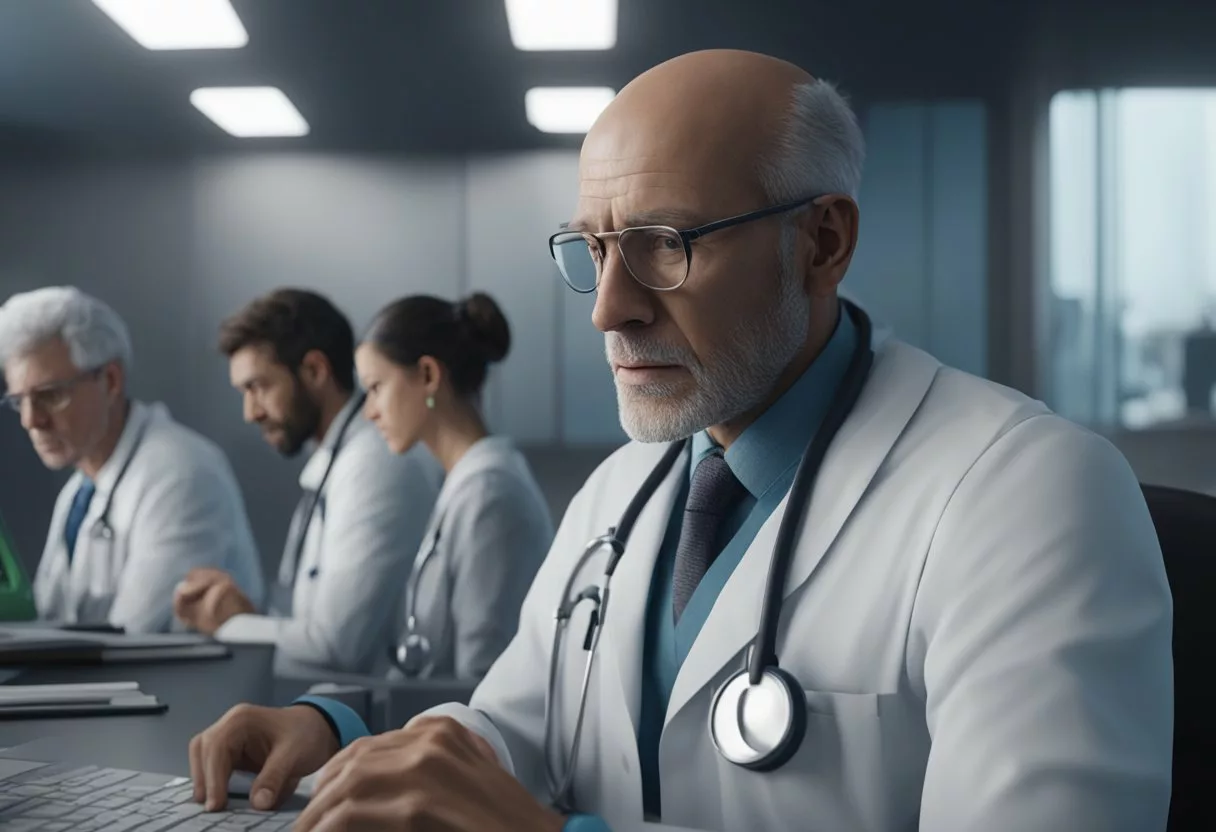
Degloving injuries can result in a variety of complications, both short-term and long-term. It is important to be aware of these complications so that appropriate steps can be taken to manage them.
Short-Term Complications
Short-term complications of degloving injuries can include infection, blood loss, tissue death, and nerve damage. Infection can occur if the wound is not properly cleaned and dressed. Blood loss can be significant, especially if the injury is severe. Tissue death can occur if the blood supply to the affected area is compromised. Nerve damage can result in loss of sensation or movement in the affected area.
Long-Term Complications
Long-term complications of degloving injuries can include scarring, loss of function, and chronic pain. Scarring can be significant, especially if the injury was severe. Loss of function can occur if the injury affects muscles, tendons, or other structures that are important for movement. Chronic pain can result from nerve damage or other factors.
It is important to note that not all degloving injuries will result in complications, and the severity of complications can vary depending on the nature and severity of the injury. However, it is important to be aware of the potential complications and to seek appropriate medical care if complications arise.
Recovery and Rehabilitation
Healing Process
The healing process for a degloved face injury is a complex and lengthy journey that requires a multidisciplinary approach. The first step in the recovery process is post-operative care, which involves monitoring the patient for any signs of infection, bleeding, or other complications. This is followed by a series of surgeries to repair and reconstruct facial structures, such as the skin, bones, and muscles. The number of surgeries required depends on the severity of the injury and the extent of the damage.
During the healing process, the patient will need to follow a strict regimen of medications, wound care, and physical therapy. This will help to promote healing, reduce pain and inflammation, and prevent complications. The patient will also need to attend regular follow-up appointments with their healthcare provider to monitor their progress and make any necessary adjustments to their treatment plan.
Rehabilitation Programs
Rehabilitation is an essential part of the recovery process for a degloved face injury. It involves a range of therapies and exercises designed to help the patient regain function and mobility in their facial structures. Rehabilitation programs are typically tailored to the individual needs of each patient and may include physical therapy, occupational therapy, speech therapy, and psychological support.
Physical therapy is focused on improving the patient’s range of motion, strength, and flexibility in their facial muscles. This may involve exercises such as facial massage, stretching, and strengthening exercises. Occupational therapy is focused on helping the patient perform daily activities, such as eating, speaking, and grooming. Speech therapy is focused on helping the patient regain their ability to speak and communicate effectively.
Psychological support and emotional support are also important components of the rehabilitation process. A degloved face injury can have a profound impact on a patient’s mental health and well-being. Therefore, it is essential to provide patients with the necessary support and resources to cope with the emotional and psychological challenges of their injury.
In conclusion, the recovery and rehabilitation process for a degloved face injury is a complex and lengthy journey that requires a multidisciplinary approach. The healing process involves a series of surgeries, post-operative care, and a strict regimen of medications, wound care, and physical therapy. Rehabilitation programs are tailored to the individual needs of each patient and may include physical therapy, occupational therapy, speech therapy, and psychological support.
Psychological Considerations

Emotional Impact
Experiencing a degloved face injury can be a traumatic event that can have a significant emotional impact on the individual. The injury can result in feelings of shock, fear, and anxiety, which can be overwhelming. The individual may also experience feelings of depression and sadness due to the disfigurement caused by the injury.
The emotional impact of a degloved face injury can also extend to the individual’s family and friends. They may feel a sense of helplessness, guilt, and worry for the individual’s well-being. Therefore, it is important to provide emotional support to the individual and their loved ones during the recovery process.
Psychological Impact
In addition to the emotional impact, a degloved face injury can also have a significant psychological impact on the individual. The injury can result in a loss of self-esteem and confidence, which can affect the individual’s quality of life. The individual may also experience social isolation due to the facial disfigurement caused by the injury.
The psychological impact of a degloved face injury can be long-lasting and may require psychological therapy to help the individual cope with the trauma. The therapy may involve cognitive-behavioral techniques to help the individual manage their emotions and thoughts related to the injury.
Overall, the emotional and psychological impact of a degloved face injury can be significant and should be addressed during the recovery process. Providing emotional support and psychological therapy can help the individual and their loved ones cope with the trauma and improve their quality of life.
Prevention and Safety
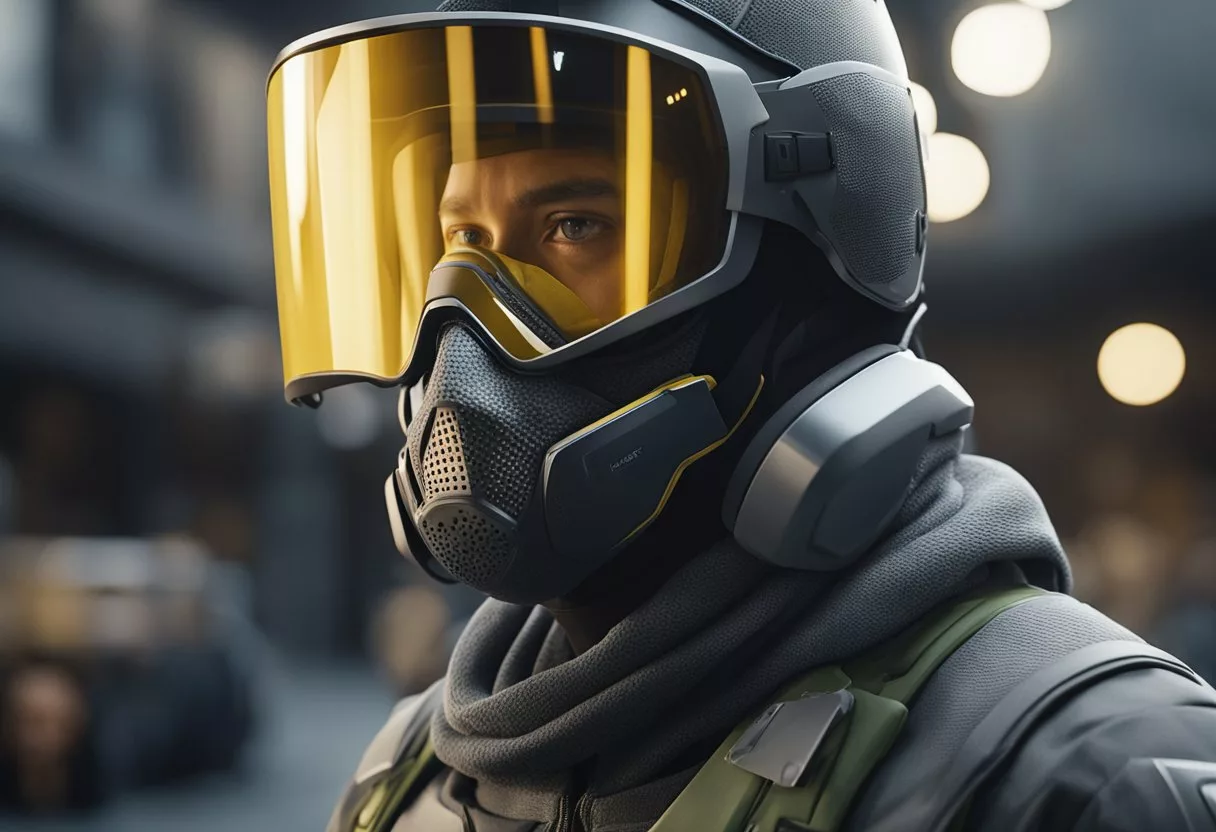
Protective Measures
Preventing degloving injuries involves implementing stringent safety measures in both industrial and daily settings. Adequate protective gear, adherence to safety protocols, and awareness campaigns contribute to injury prevention.
In workplaces where the risk of degloving injuries is high, employers must provide workers with appropriate protective gear, such as gloves, helmets, and face shields. Workers should also receive training on how to use the gear correctly and safely. Employers should also implement safety protocols, such as regular equipment maintenance and inspection, to minimize the risk of accidents.
In daily settings, individuals can take steps to prevent degloving injuries by wearing protective gear, such as helmets and seat belts, when engaging in risky activities. They should also follow safety guidelines, such as traffic rules and regulations, to minimize the risk of accidents.
Safety Protocols
In addition to using protective gear, safety protocols can also help prevent degloving injuries. Safety protocols should be implemented in workplaces and daily settings to minimize the risk of accidents.
In workplaces, safety protocols can include regular equipment maintenance and inspection, hazard identification and risk assessment, and emergency response plans. Workers should also receive training on how to identify and report hazards and how to respond to emergencies.
In daily settings, safety protocols can include following traffic rules and regulations, wearing seat belts and helmets, and avoiding risky behaviors, such as driving under the influence of drugs or alcohol.
Overall, implementing adequate protective measures and safety protocols can help prevent degloving injuries and minimize the risk of complications.
Frequently Asked Questions
What are the common causes of facial degloving injuries?
Facial degloving injuries are typically caused by high-impact trauma, such as motor vehicle accidents, falls, crush injuries, or violent assaults. These types of injuries can cause the skin and underlying tissue to be separated or completely stripped from the face, resulting in significant damage to the facial tissues, nerves, and underlying structures.
What are the different classifications of degloving injuries?
Degloving injuries are classified into three types: Type I, Type II, and Type III. Type I injuries involve the skin and subcutaneous tissues, Type II injuries involve the skin and subcutaneous tissues as well as the muscles and fascia, and Type III injuries involve the skin and subcutaneous tissues, muscles, fascia, and bones.
How is a degloving injury of the face typically managed and treated?
The management and treatment of a degloving injury of the face depend on the severity of the injury. In general, treatment may include surgical intervention to repair and reconstruct the damaged tissues, including skin grafts and flap procedures. Antibiotics may also be prescribed to prevent infection.
What immediate first aid steps should be taken for a degloving injury?
In cases of degloving injuries, immediate first aid steps should be taken to prevent further damage and promote healing. These may include stopping any bleeding, cleaning the wound, and covering it with a sterile dressing. It is important to seek medical attention as soon as possible.
How is pain managed for patients with degloved facial injuries?
Pain management for patients with degloved facial injuries may include the use of pain medications and other interventions, such as nerve blocks, to help manage pain and improve comfort.
What are the long-term implications of a degloved face injury?
The long-term implications of a degloved face injury depend on the severity of the injury and the extent of the damage. In some cases, patients may experience scarring, nerve damage, and other long-term complications. Rehabilitation and ongoing medical care may be necessary to manage these issues and improve outcomes.